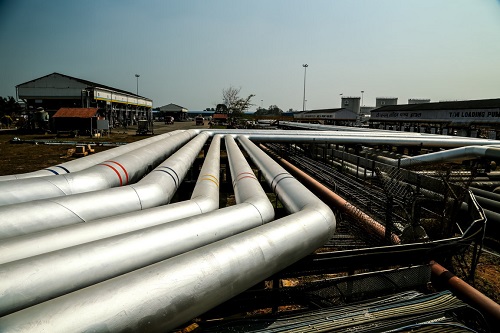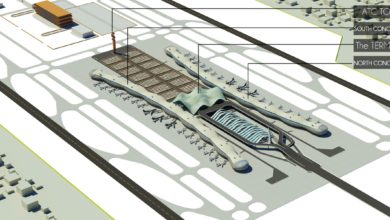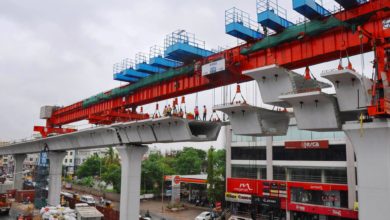The Longest Pipeline Venture Kandla-Gorakhpur LPG Pipeline

Tell us about your project, Kandla-Gorakhpur LPG Pipeline?
The 2,757 km cross-country LPG pipeline possibly is the longest such pipelines in the world. The IOC plans to import LPG at Kandla in Gujarat and move it through the 2,757-kilometer pipeline to Gorakhpur via Ahmedabad, Ujjain, Bhopal, Kanpur, Allahabad, Varanasi, and Lucknow, connecting eastern India with the west coast. The pipeline covers an overall distance of 1,063 km in Gujarat, 611 km in Madhya Pradesh, and 1,083 km in Uttar Pradesh.
What are the main feature of this project?
The Kandla-Gorakhpur LPG Pipeline (KGPL) is the longest LPG (liquefied petroleum gas) pipeline in the country to meet the growing demand of LPG gas in India. State-owned Indian Oil Corporation Ltd. (IOC) is laying an LPG pipeline from Gujarat Kandla Coast to Gorakhpur in eastern Uttar Pradesh to suffice the growing market for cooking fuel.
The Kandla – Gorakhpur LPG Pipeline (KGPL) is being implemented by a consortium of three PSU Oil Marketing Companies (OMCs), namely Indian Oil Corporation Ltd. with a 50 percent share, and Bharat Petroleum Corporation Ltd. and Hindustan Petroleum Corporation Ltd. each with a 25 percent share.
The 2,757 km cross-country LPG pipeline possibly is the longest such pipelines in the world. The IOC plans to import LPG at Kandla in Gujarat and move it through the 2,757-kilometer pipeline to Gorakhpur via Ahmedabad, Ujjain, Bhopal, Kanpur, Allahabad, Varanasi, and Lucknow, connecting eastern India with the west coast. The pipeline covers an overall distance of 1,063 km in Gujarat, 611 km in Madhya Pradesh, and 1,083 km in Uttar Pradesh.
Describe why the project is the world’s longest LPG pipeline?
The world’s longest LPG pipeline would be laid at the cost of Rs 9,000 crore. It will take the product from three LPG import terminals (at Kandla, Dahej and Pipavav) and two refineries (at Koyali and Bina). The product will be further transported to LPG bottling plants of the OMCs en route in the States of Gujarat, Madhya Pradesh, and Uttar Pradesh through feeder lines and branch pipelines. This project supply LPG to 22 bottling plants of Gujarat (3), MP (6) and UP (13). Also, the pipeline would feed LPG through road-bridging to another 21 LPG bottling plants in Rajasthan, Gujarat, MP, Maharashtra and Uttar Pradesh.
The 1,083-km portion of the pipeline in Uttar Pradesh will provide direct supplies to IndianOil LPG bottling plants in Kanpur, Allahabad, Varanasi, Lucknow & Gorakhpur; BPCL in Jhansi, Kanpur, Lucknow, Allahabad & Gorakhpur; and HPCL in Unnao, Varanasi & Gorakhpur. The pipeline will also supply bulk LPG via road-bridging to 9 more LPG bottling plants in UP, located at Shahjahanpur, Farrukhabad, Kashipur, Lakhimpur Kheri, Saleempur, Bareilly, Sultanpur and two plants at Gonda.
Once completed, this single pipeline will transport 8.5 million metric tons per annum (MMTPA) of LPG, which is about 25% of India’s total LPG demand. This way, about 34 crore people in the States of Gujarat, Madhya Pradesh, and Uttar Pradesh will directly benefit from constant LPG supplies. This will be the country’s most massive LPG pipeline following Jamnagar-Loni LPG pipeline, which was commissioned by GAIL (Gas Authority of India Ltd.). GAIL currently operates a 1,415-km line from Jamnagar in Gujarat to Loni near Delhi. The line carries 2.5 million tonnes of LPG annually. GAIL also has a 623-km Vizag-Secunderabad pipeline.
IOC in its application to oil regulator Petroleum and Natural Gas Regulatory Board (PNGRB) for laying the pipeline had in 2016 stated that: The demand for LPG is increasing consistently in recent years. Further, due to the Government of India’s emphasis to make LPG – a clean and environmentally friendly fuel, available to every domestic household in the country, LPG demand is expected to increase at a much steeper rate in the coming year.” It expected the deficit between what its refineries produce and demand to reach around 10 million tons per annum by 2031-32. LPG demand has grown by 10.5 percent in this fiscal year, with only about half of the 8.4 million tons consumed being locally produced.
“Considering the deficit figures for LPG, it is essential to import LPG at the nearest port and then transport it to the bottling plants through the most economical modes,” IOC had said. IOC is building additional import capacities at Paradip, Cochin, and Kandla to meet the increasing requirements of imports. “West coast remains most suitable to import LPG to meet the demand of North and Central India. Though there is a common carrier pipeline to link West Coast to North i.e. Jamnagar-Loni pipeline, there is no LPG pipeline in existence or in construction to link West Coast to Central India or Eastern India,” it had said.
Describe the advantages of this mega pipeline project?
The LPG pipeline is a safe, economical and environmentally friendly mode for long-distance transportation. Even in times of natural disasters, roadblocks, etc. they reach their destinations uninterrupted. By transporting LPG through the pipeline, there will be negligible environmental impact and low energy consumption and reduced transportation losses compared to other modes of transportation.





